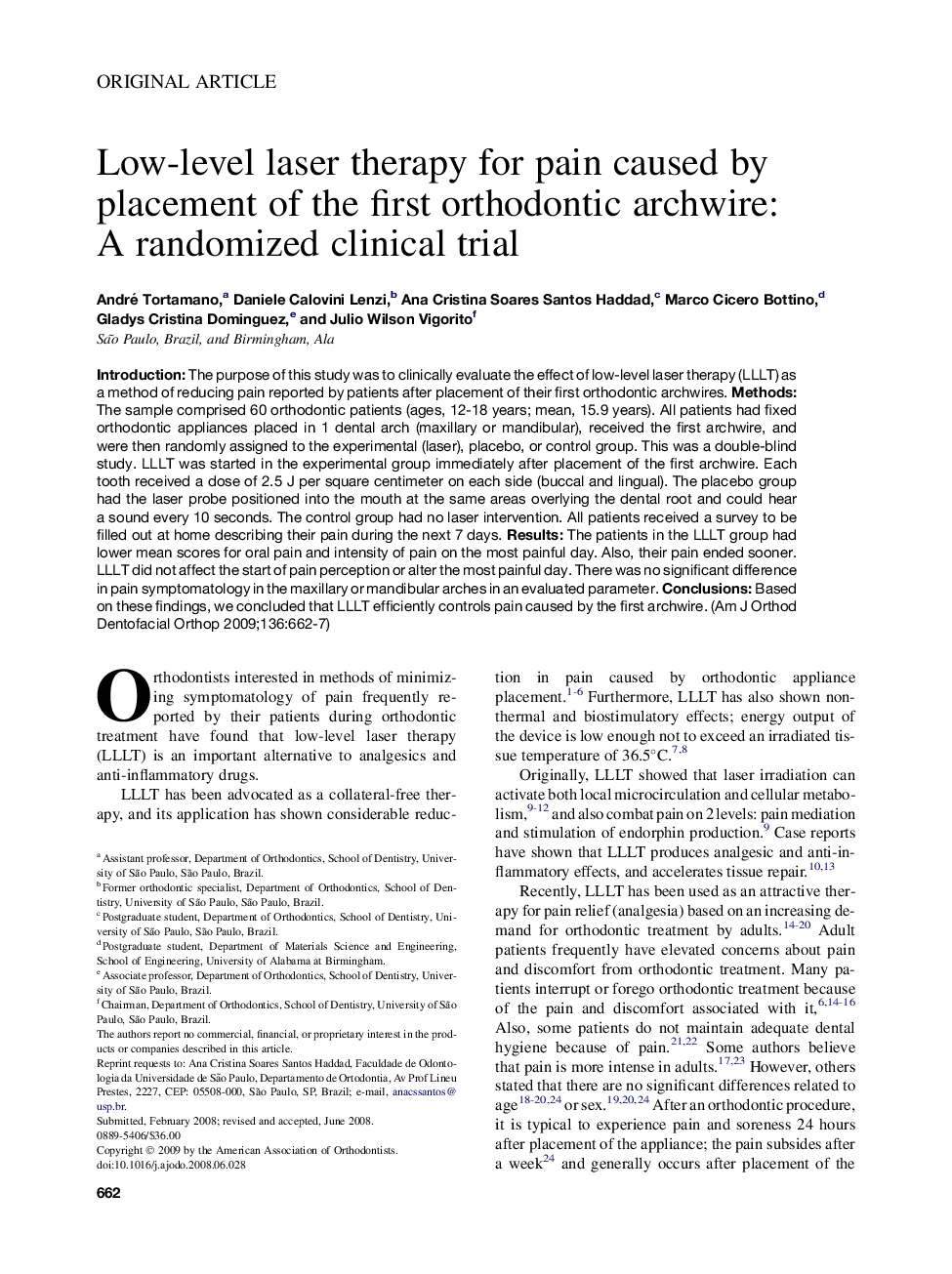| Article ID | Journal | Published Year | Pages | File Type |
|---|---|---|---|---|
| 3118044 | American Journal of Orthodontics and Dentofacial Orthopedics | 2009 | 6 Pages |
IntroductionThe purpose of this study was to clinically evaluate the effect of low-level laser therapy (LLLT) as a method of reducing pain reported by patients after placement of their first orthodontic archwires.MethodsThe sample comprised 60 orthodontic patients (ages, 12-18 years; mean, 15.9 years). All patients had fixed orthodontic appliances placed in 1 dental arch (maxillary or mandibular), received the first archwire, and were then randomly assigned to the experimental (laser), placebo, or control group. This was a double-blind study. LLLT was started in the experimental group immediately after placement of the first archwire. Each tooth received a dose of 2.5 J per square centimeter on each side (buccal and lingual). The placebo group had the laser probe positioned into the mouth at the same areas overlying the dental root and could hear a sound every 10 seconds. The control group had no laser intervention. All patients received a survey to be filled out at home describing their pain during the next 7 days.ResultsThe patients in the LLLT group had lower mean scores for oral pain and intensity of pain on the most painful day. Also, their pain ended sooner. LLLT did not affect the start of pain perception or alter the most painful day. There was no significant difference in pain symptomatology in the maxillary or mandibular arches in an evaluated parameter.ConclusionsBased on these findings, we concluded that LLLT efficiently controls pain caused by the first archwire.
